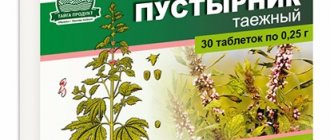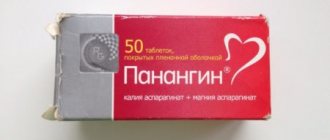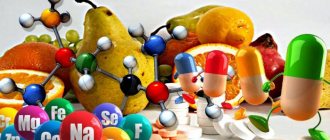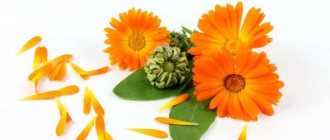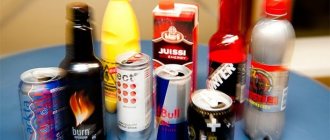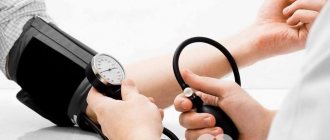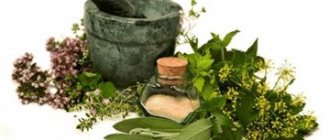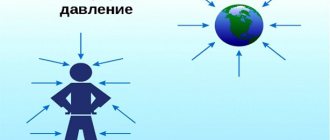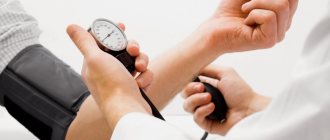Benefits of peony for the heart
The medicinal properties of peony evasive (marina root) are explained by the composition of the plant. It includes essential oils, glycosides, organic acids and tannins. Main therapeutic actions:
- calms and improves performance;
- relaxes muscle fibers, both skeletal muscles and smooth muscles in the arterial wall;
- relieves insomnia;
- normalizes the autonomic regulation of vascular tone;
- lowers peripheral arterial resistance and blood pressure;
- slows down heart rate;
- has anti-inflammatory and analgesic effects;
- has a mild diuretic effect.
Therefore, preparations from peony can be prescribed to patients with neurosis, neurocirculatory dystonia of the hypertensive type, essential and secondary hypertension.
Moreover, the effect of these drugs will be most fully manifested if complaints of headache and heart pain, palpitations, and increased blood pressure arise against the background of psycho-emotional stress.
Peony has been noted to have a beneficial effect on the course of the pathological menopausal period, including hypertension caused by hormonal fluctuations, retention of water and sodium salts in the body. Peony tincture also helps with anxiety and depression, and hysteria.
We recommend reading the article about hawthorn for the heart. From it you will learn about the benefits of the plant for the heart and blood vessels, the effect on blood pressure, indications and contraindications, and effective recipes. And here is more information about tinctures for the heart.
Diseases for which the infusion is used
- Diseases of the gastrointestinal tract;
- To normalize metabolic processes;
- Treatment of neuropsychic disorders, elimination of insomnia, reduction of excitability, restoration of endurance and ability to work.
- Therapy for various phobias, stress, depression.
- Restoring normal rhythms, improving sleep.
- In the complex treatment of malignant and benign tumors. It has a good effect on diseases of the ovaries (polycystic syndrome) and cervix.
- Convulsive states, spasms.
- Skin diseases.
- For general strengthening and increasing the body's resistance.
- Used to normalize the menstrual cycle and during menopause.
- Peony is used in cosmetology to improve the condition of the skin.
- Restoring normal hair growth, preventing hair loss. The positive effect is achieved due to the high content of essential oils and amino acids in the medicine.
- For the treatment of headaches of unknown origin.
DETAILS: Are people with arrhythmia accepted into the army? Do they take you into the army if you have sinus arrhythmia?
You cannot prescribe medication for yourself, as there are many side effects.
- due to the content of tannins, the elasticity of the vascular walls improves;
- performance increases;
- muscle spasm in the artery wall decreases;
- insomnia goes away;
- heart rate normalizes;
- vascular tone is regulated;
- vascular resistance decreases.
When pressure increases, the outflow of fluid from the body is disrupted; peony has a mild diuretic effect.
The drug is often prescribed to patients with neuropsychiatric conditions accompanied by arterial hypertension.
In small doses, peony root preparations are used for gout and act as an analgesic and anti-inflammatory agent.
Peony root can be dug up for medicinal purposes at any time during the growing season. But it is necessary to understand that by using the entire root for harvesting at once, we are destroying the plant. Therefore, if you do not live one day at a time, but plan to use the root in the future, it must be cut off in the ground and used only partially.
To restore the thickets, peony roots in the exploited area are recommended to be harvested with an interval of 30 years, while above-ground ones - only after 3 years.
The chemical composition of the root includes:
- alkaloid
- essential oil (concentration can reach 0.14 - 1.7%, it contains peonol C9H10O3, methyl salicylate, benzoic and salicylic acids)
- glutamine
- arginine
- tannins
- carbohydrates
- organic acids
- vitamin C
- flavonoids
- phenolcarboxylic acids
- starch - up to 77%
- glycosin salicin C13H18O7
- sugar - up to 10% (due to such a high concentration of this component, the taste of peony root is sweetish).
A tincture is prepared from peony root. It is used orally, 30-40 drops three times a day for a month. Then take a break for 10 days and, if necessary, repeat the course of treatment.
According to the requirements of the Pharmacopoeial Article FS 42-99-72, for medicinal use, peony root must meet the following requirements:
- moisture content - no more than 13%
- total ash - 10%
- ash insoluble in 10% hydrochloric acid, - 1%
- organic impurities - 0.5%
- mineral - 1%
Does the tincture increase or decrease blood pressure?
Due to its calming and relaxing effect, the product reduces blood pressure. It should be borne in mind that in case of hypertension and secondary hypertension it cannot be used as the main drug, since it usually slightly reduces systolic and diastolic indices.
The developing hypotensive effect may be sufficient if the vascular spasm is of neurogenic origin or if the autonomic regulation of arterial tone is impaired in neurocirculatory dystonia.
Rules of application
The tincture is dosed in drops. As a rule, 20 drops dissolved in a quarter glass of water are recommended per dose. The drug is taken 15 minutes before meals three times a day. The duration of the course is determined depending on the severity of the disease and the characteristics of the course. When stopping treatment, the stability of the results achieved and individual tolerability of the drug are taken into account.
For high blood pressure, peony tincture can be prescribed for 15-20 days, and then a break for a month is recommended, after which the course can be repeated.
Watch the video about other methods of treating hypertension:
How to use the medicine correctly
The drug is produced in the form of an alcohol tincture based on peony evader. The grass is a perennial plant and belongs to the peony family. It is infused with 40 percent ethyl alcohol.
Flowers, leaves, stems and rhizomes are used to produce the infusion. The roots have a red-brown hue, a strong aroma and a sweet taste. Leaves, stems and flowers are used as raw materials only during the flowering period.
- benzoic acid;
- salicylic acid;
- tannins;
- flavonoids;
- alkaloids;
- glycosides;
- essential oils.
Maryin root is classified as a poisonous plant.
Herbal preparations have not been fully studied by scientists, as they have a complex composition. Many patients think that herbal treatment is completely harmless, but this is not so. The infusion contains only ten percent of the active substance, and if used correctly, it cannot be poisoned.
It is important to take the medicine only after consulting your doctor and to follow all dosages.
DETAILS: ECG 50 mm s
All dosages and duration of treatment are individual. The instructions for use indicate the general treatment regimen.
- The medicine is taken orally, that is, orally.
- Do this fifteen minutes before meals.
- One dose requires 20 drops of evasive peony.
- Take three times a day.
The duration of treatment depends on the nature, severity and course of the disease. In general, treatment lasts about two weeks. Sometimes doctors prescribe a repeat course, but this is done with a break of three months.
The duration of therapy and dosage are selected for each patient only by the doctor. You cannot prescribe therapy for yourself; self-medication is fraught with disastrous consequences.
Side effects
With prolonged use or exceeding the dose, patients note increased drowsiness, fainting, dizziness, a sharp drop in blood pressure, and general weakness. A common side effect is increased acidity and stomach pain, especially in the presence of gastritis or peptic ulcer. In such cases, the drug should be discontinued and symptomatic treatment prescribed.
In case of individual hypersensitivity, taking the tincture leads to allergic reactions in the form of rashes, skin itching, and redness of the skin.
When treated with peony tincture, undesirable consequences were noted in the form of nausea and vomiting, severe headache and heaviness in the head.
Contraindications and special instructions for use
Peony tincture is not prescribed for children. For pregnant women, the use of the drug is extremely dangerous, as it can lead to spontaneous abortion due to increased uterine tone . Breastfeeding is also a contraindication for use. Due to the risk of a strong decrease in blood pressure, the tincture is not prescribed for arterial hypotension.
Treatment with the drug is not recommended in the presence of the following conditions:
- increased acidity of gastric juice;
- severe diseases of the liver and kidneys with a significant decrease in their function;
- chronic alcoholism;
- individual intolerance.
When prescribed together with sleeping pills, tranquilizers, and antipsychotics, an increase in their sedative effect is observed. During the treatment period, you should refrain from driving vehicles or other mechanisms, since the reaction speed and attention of patients taking peony tincture are reduced.
What is prostatitis?
The prostate is a glandular organ that covers the urethra and, partially, the seminal ducts. The prostate performs a number of functions that play an important role in the male body. The most common cause of disruption of this organ is prostatitis. Pathologies of the prostate gland also include tumor diseases.
Features of the structure of the prostate, functions performed
What is the prostate gland? What are the features of the anatomical structure and functions of the organ? The prostate is a purely male organ. It has the shape of an inverted trapezoid. As mentioned above, it covers the urethra and seminal ducts.
Male reproductive system
The prostate gland consists of two lobes, which are connected by an isthmus. The age factor provokes thickening of the isthmus, which contributes to compression of the canal. This leads to stagnation of urine and provokes inflammation of the bladder and kidneys.
The glandular organ performs the following functions:
- Secretory. Ensures the production of testosterone, stimulates secretions that are involved in the process of fertilization of the egg.
- Motor. The smooth muscle fibers of the organ are a sphincter that holds urine in the bladder.
- Barrier. Prevents the spread of infection from the urethra up the urinary tract.
The prostate produces hormones, ensures normal urination, and holds urine in the bladder when necessary. The adequacy of the prostate is an important aspect of men's health.
Healthy prostate and prostatitis
Malignant tumor formations
Malignant prostate pathology is the most common disease affecting men over fifty to sixty years of age. The causes of prostate cancer are heredity, progressive adenoma (benign tumor).
Symptoms and main manifestations of cancer can be divided into three groups:
- Impaired outflow of urine. Urination is frequent, in small portions. Nocturnal urination predominates. The urge to urinate is pronounced.
- Symptoms as a result of tumor growth. The appearance of blood in seminal fluid and urine. Erectile dysfunction. Palpable pain localized in the groin, perineum, and lower back.
- Symptoms as a result of metastases. Pain in the bones, swelling of the limbs, enlarged lymph nodes, sudden weight loss. Anemia develops as a result of a decrease in the level of hemoglobin and red blood cells. Cancerous exhaustion, so-called cachexia, is also observed.
Malignant tumor
Diagnosis of cancer tumors and their treatment are mandatory steps on the path to recovery. Research methods such as prostate biopsy, magnetic resonance imaging, ultrasound scanning help establish an accurate diagnosis, characteristics, and location of the cancer tumor.
Prostate cancer is treated with surgery and minimally invasive interventions. Surgical means radical removal of the prostate while preserving erectile and urinary functions.
An example of a minimally invasive intervention is targeted exposure to high-intensity ultrasound waves. Extreme temperature increases lead to the destruction of cancer cells.
Radiation therapy is also carried out, targeting the tumor and lymph nodes.
Adenoma
Hyperplasia (excessive growth) of the prostate is an age-related pathology. Every second man over sixty years of age is susceptible to the disease. The essence of the pathology is the benign growth of prostate tissue, followed by blockage of the urethra.
The main reason for the development of adenoma is hormonal changes. Disruption of metabolic processes, an increase in the level of female hormones against the background of a decrease in male hormones leads to the formation of nodules, which over time increase to a significant size.
Prostate adenoma
Clinical manifestations are based on the main problem of adenoma - urinary disturbances. The main manifestations include:
- Difficulty urinating leads to the formation of residual urine. This contributes to the development of purulent-inflammatory processes, the accumulation of salts, with the subsequent formation of stones.
- Acute urinary retention. Promotes the development of inflammatory processes in the genitourinary system.
Pain localized in the lumbar region, soreness accompanying the process of urination, small portions of urine are the main symptoms of adenoma.
Diagnostics includes: medical history, digital examination, gland biopsy, ultrasound examination, tumor marker (allowing to differentiate a benign tumor).
The optimal treatment option is surgery. Today, operations such as laparoscopic adenectomy, transurethral electroresection, and laser enucleation of hyperplasia are performed.
Acute prostatitis
Modern medicine distinguishes such types of prostatitis in men as acute and chronic. The immediate cause of acute prostatitis is bacterial microflora. Getting from the source of infection to the prostate, bacteria contribute to the occurrence of the inflammatory process. Predisposing factors significantly accelerate the process: hormonal disorders, congestion in the pelvic organs.
Acute prostatitis is an acute inflammation of the prostate gland caused by infection
Medical classification distinguishes three forms of prostatitis:
- catarrhal There is inflammation of individual prostate ducts;
- follicular. Spread of the pathological process to the lobes of the prostate gland;
- parenchymal. Lack of treatment in the initial, mild stages leads to the spread of inflammation to both lobes of the glandular organ and the involvement of connective tissue. Abscess is the most severe form.
Symptoms of prostate inflammation are varied. There are local and general. Local symptoms include pain in the anal area, genitals, and perineum. The main symptom is impaired urination (frequent, small portions). General symptoms include a slight increase in temperature (rarely up to forty degrees), weakness, drowsiness, loss of appetite, dizziness.
Diagnosis of acute prostatitis includes medical history, rectal digital examination (palpation), laboratory tests (blood, urine).
Based on the results of the diagnosis, comprehensive treatment is prescribed, including drug therapy (antibiotics are required), adherence to a strict diet, cessation of smoking and drinking alcoholic beverages.
Chronic prostatitis
The medical classification distinguishes acute and chronic types of prostatitis and the main difference between them is the presence or absence of an inflammatory core.
In chronic prostatitis, there is no focus, however, the following symptoms appear:
- pain in the groin area;
- disturbance of urination (small portions of urine). Feeling of incomplete emptying of the bladder;
- subsidence of sexual desire. Increased risk of developing impotence;
- aggressiveness, short temper, loss of strength, depression.
Congestive prostatitis occurs for two reasons. The first is stagnation of venous blood. The second is stagnation of the secret. Varicose veins, as well as a sedentary lifestyle, smoking, and alcohol can provoke blood stagnation. Prolonged arousal, abstinence from sexual relations are the reasons that provoke stagnation of secretions.
Diagnostic measures, as well as for acute prostatitis, include anamnesis, palpation examination, urine and blood tests.
Therapeutic measures other than bacterial inflammation of the prostate do not involve the use of antibiotics.
Painful sensations and the inflammatory process are controlled with the help of non-steroidal anti-inflammatory drugs. The basis of treatment is massage and physiotherapy procedures.
Source: https://prostatoff.ru/raznoe/nastojka-piona-ponizhaet-davlenie-ili-net
